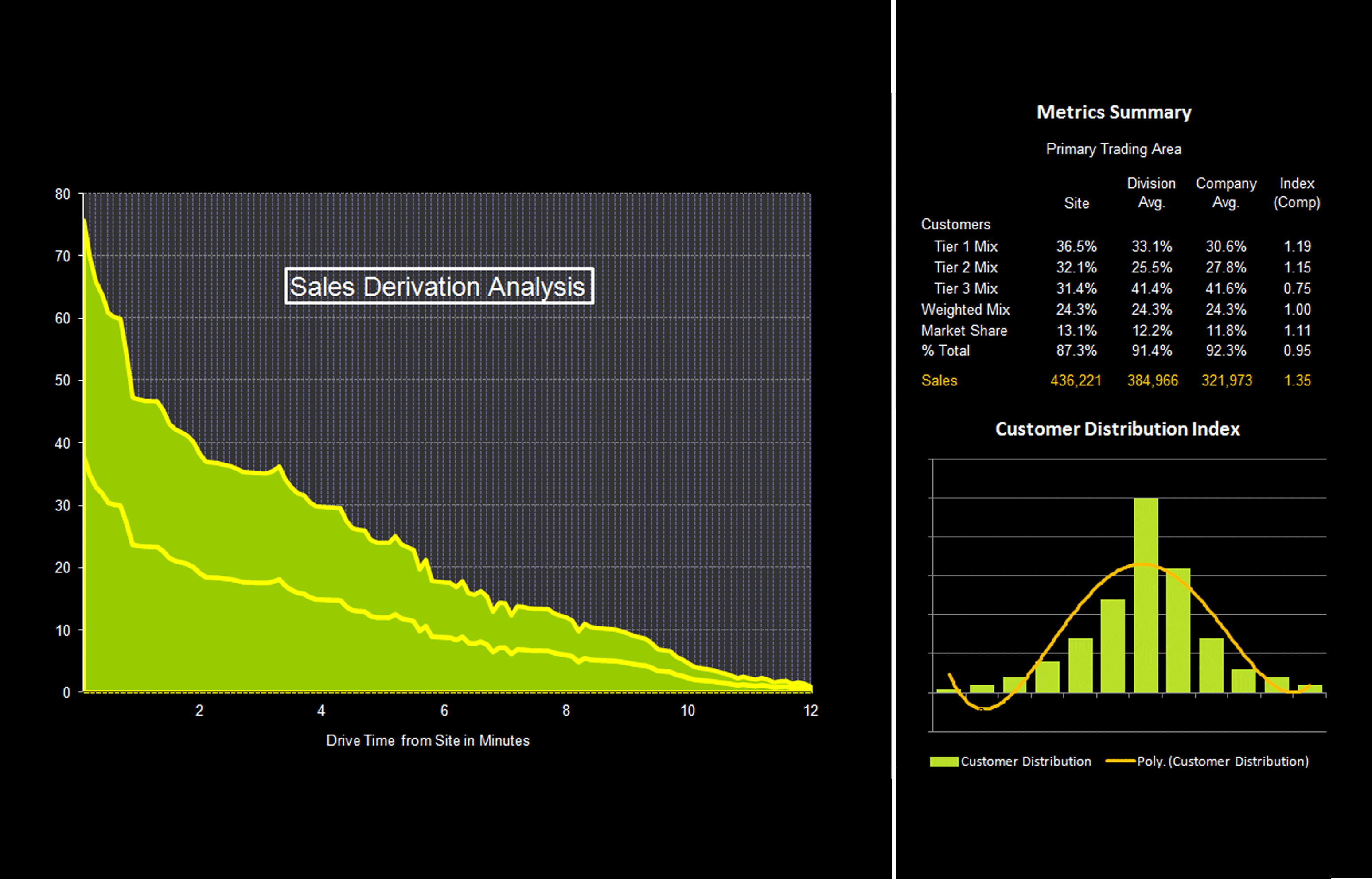Is your company looking for a tool to predict the business potential of new locations? Whether you’re a specialty grocer, a drug store, bank or restaurant, ARA has taken an imaginative approach to model development. Our work has been rooted in years of “on the ground” experience. As a result, we are practitioners who have developed tools to enhance our skills rather than “techies” attempting to apply our theories in the real world.
for a tool to predict the business potential of new locations? Whether you’re a specialty grocer, a drug store, bank or restaurant, ARA has taken an imaginative approach to model development. Our work has been rooted in years of “on the ground” experience. As a result, we are practitioners who have developed tools to enhance our skills rather than “techies” attempting to apply our theories in the real world.
Models designed to forecast futures sales vary in their complexity, usability, and accuracy and are difficult for the layman to evaluate. Often their value is not known for years after the fact, when expensive real estate investments have already been made. Here are some questions you should be asking about any potential sales forecasting model:
- Is the model taking into account all channels that feed into total demand for your business? For example, if you are opening bank branches, is the model considering potential from daytime/workplace population and passerby traffic? Or is it only utilizing the residential population, a common modeling error for many types of businesses? Can it account for the effects of co-tenancy, site visibility, psychological barriers, incidental purchases via highway exposure, etc.?
- Is it capable of assessing the impact on sister facilities and other competitors in the trade area? Are these impacts realistic? For example, say you are predicting sales for a high-end specialty grocer. Check carefully to see how much of the new site’s sales are being captured from the warehouse store across the street. Regression models, although widely used in some industries, are generally incapable of predicting business lost to a chain’s nearby outlets.
- Has the varying appeal of your business by demographics/psychographics been factored into the model? For example, the appeal of a clothing store may vary considerably by household income, age, and ethnicity.
- Just as all stores are not alike in their appeal, all population is not the same in their propensity to patronize certain types of formats.
- Does the trade area reflect the drawing power and market penetration of your existing facilities? A thorough analysis of customer transaction data on existing facilities is generally needed to accurately predict future performance.
- More to the point, what is its track record?
The complexity of models will vary based on the needs of the user, their budget and the type of business they are in. In many types of retail-oriented site development, standard “gravity” models have been widely used to produce sales forecasts. Increasingly though, they are insufficient for accurate forecasting. Compared to 30 years ago, when these models were first made popular, the population today is considerably less homogeneous and the competitive environment is more differentiated. Area Research Associates has found a hybrid approach to increasingly be more effective. These types of models incorporate the geographic decay of “gravity” models, but match the particular needs of various subgroups of the population with the different offerings of available competitive outlets. This multi-dimensional approach tends to yield more accurate prediction of future outcomes, once the initial research and groundwork has been done.
